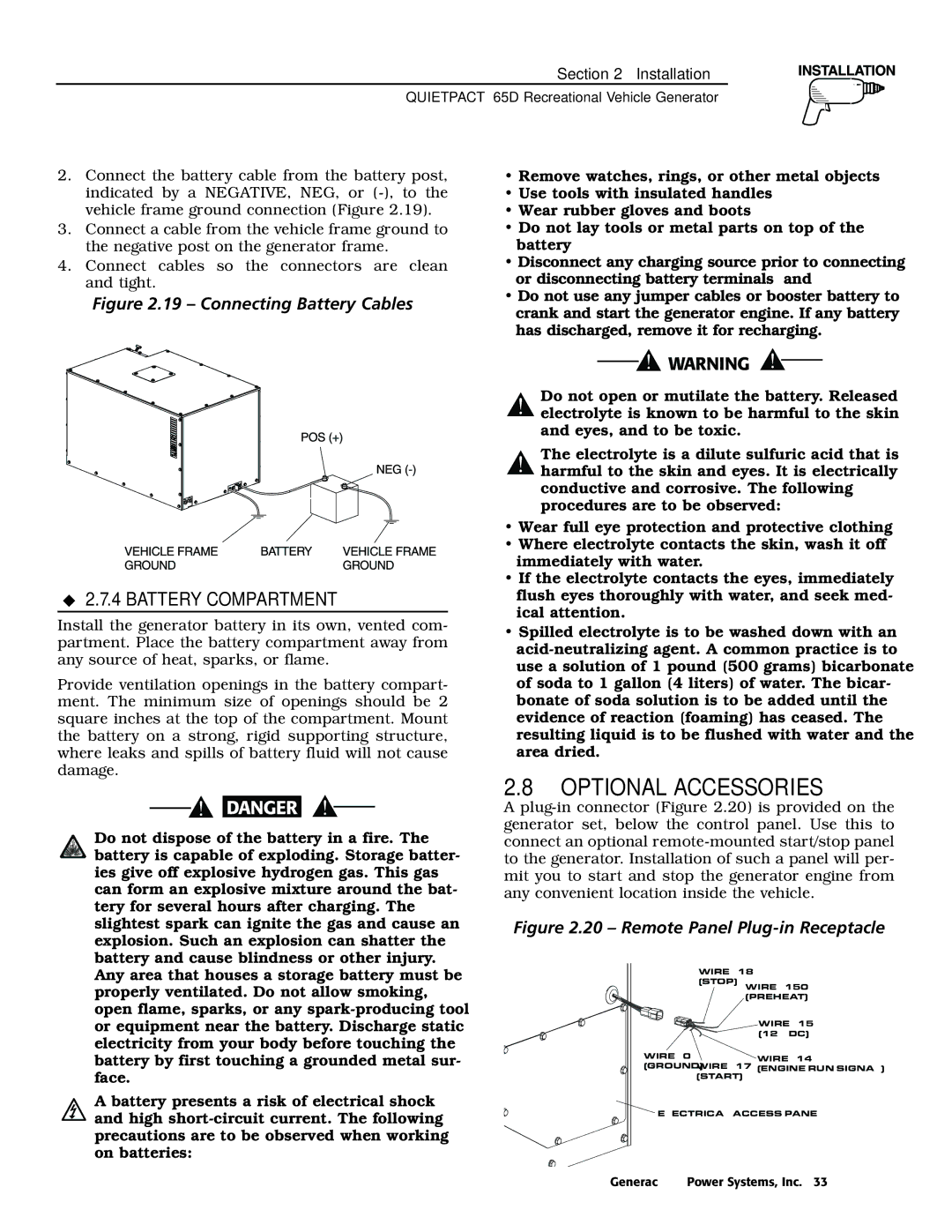
Section 2 – Installation
QUIETPACT™ 65D Recreational Vehicle Generator
2.Connect the battery cable from the battery post, indicated by a NEGATIVE, NEG, or
3.Connect a cable from the vehicle frame ground to the negative post on the generator frame.
4.Connect cables so the connectors are clean and tight.
Figure 2.19 – Connecting Battery Cables
◆2.7.4 BATTERY COMPARTMENT
Install the generator battery in its own, vented com- partment. Place the battery compartment away from any source of heat, sparks, or flame.
Provide ventilation openings in the battery compart- ment. The minimum size of openings should be 2 square inches at the top of the compartment. Mount the battery on a strong, rigid supporting structure, where leaks and spills of battery fluid will not cause damage.
Do not dispose of the battery in a fire. The battery is capable of exploding. Storage batter- ies give off explosive hydrogen gas. This gas can form an explosive mixture around the bat- tery for several hours after charging. The slightest spark can ignite the gas and cause an explosion. Such an explosion can shatter the battery and cause blindness or other injury. Any area that houses a storage battery must be properly ventilated. Do not allow smoking, open flame, sparks, or any
A battery presents a risk of electrical shock and high
•Remove watches, rings, or other metal objects;
•Use tools with insulated handles;
•Wear rubber gloves and boots;
•Do not lay tools or metal parts on top of the battery;
•Disconnect any charging source prior to connecting or disconnecting battery terminals; and
•Do not use any jumper cables or booster battery to crank and start the generator engine. If any battery has discharged, remove it for recharging.
Do not open or mutilate the battery. Released electrolyte is known to be harmful to the skin and eyes, and to be toxic.
The electrolyte is a dilute sulfuric acid that is harmful to the skin and eyes. It is electrically conductive and corrosive. The following procedures are to be observed:
•Wear full eye protection and protective clothing;
•Where electrolyte contacts the skin, wash it off immediately with water.
•If the electrolyte contacts the eyes, immediately flush eyes thoroughly with water, and seek med- ical attention.
•Spilled electrolyte is to be washed down with an
2.8OPTIONAL ACCESSORIES
A
Figure 2.20 – Remote Panel Plug-in Receptacle
WIRE #18 |
| |
(STOP) | WIRE #150 | |
| ||
| (PREHEAT) | |
| WIRE #15 | |
| (12 VDC) | |
WIRE #0 | WIRE #14 | |
(GROUND) WIRE #17 | ||
(ENGINE RUN SIGNAL) | ||
(START) |
|
ELECTRICAL ACCESS PANEL
Generac® Power Systems, Inc. 33
